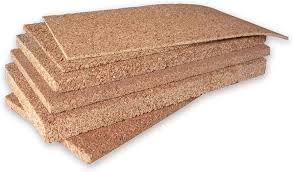Cork Board Insulation Market Overview: Natural Efficiency Driving Global Expansion

The cork board insulation market occupies a unique position within the broader thermal and acoustic insulation landscape. Distinguished by its natural origin, renewable sourcing, and multifunctional properties, cork board insulation has evolved from a niche green building solution into a competitive material in eco-conscious construction. The market is shaped by growing regulatory requirements, architectural preferences for sustainable design, and increasing demand for materials with low environmental footprints.
Core Material Attributes and Appeal
Cork board insulation offers a set of characteristics that make it highly competitive: excellent thermal conductivity, acoustic dampening, resistance to fire and pests, and natural moisture control. Unlike synthetic insulations, cork requires no chemical binders, making it safe for indoor air quality. These qualities appeal strongly to developers, especially in residential, educational, and healthcare construction projects where occupant well-being and environmental performance are prioritized.
Market Composition and Structure
The market is composed of manufacturers, distributors, retailers, and end-use stakeholders spanning architecture, construction, and renovation. While the supply side is concentrated in Mediterranean countries—due to the geographic specificity of cork oak forests—the demand side is rapidly globalizing. The structure includes both vertically integrated players and independent resellers, with a growing number of online platforms enabling global product access.
Demand Segments and Application Scope
Cork board insulation is used in floors, walls, ceilings, and roofs, both in new constructions and retrofits. In the residential sector, it is favored for passive houses and sustainable building certifications. In commercial applications, its sound-absorbing properties make it a preferred choice for offices and hospitality spaces. Demand is strongest in geographies with progressive energy efficiency policies and green building incentives, including Germany, France, Canada, and Australia.

Regulatory Framework and Compliance
The cork board insulation market operates within a regulatory environment that increasingly favors natural, low-carbon materials. Products are evaluated under international building codes, fire resistance standards, and indoor air quality benchmarks. Compliance with certifications such as LEED, WELL, and BREEAM is a critical factor in adoption, with manufacturers tailoring their offerings to align with these frameworks. This alignment not only boosts credibility but also enhances marketability in government and institutional projects.
Regional Distribution and Global Reach
Europe remains the dominant market due to local cork supply and widespread green building practices. However, the market is expanding into North America and Asia-Pacific, where building energy performance regulations are becoming more stringent. Companies are targeting these emerging markets through strategic partnerships, educational campaigns, and participation in sustainable construction expos to build awareness and credibility.
Innovation and Market Momentum
Recent product innovations—such as laminated cork boards, fire-enhanced variants, and decorative acoustic cork panels—are reshaping market expectations and driving new applications. This momentum is supported by technological integration in marketing, such as virtual product demos, environmental impact calculators, and 3D modeling compatibility. As such tools make specification easier, adoption rates are expected to rise across multiple sectors.
Outlook and Strategic Opportunities
The cork board insulation market is positioned for long-term growth, supported by structural shifts in construction standards and consumer values. As the world moves toward net-zero carbon targets, the demand for naturally sourced, energy-efficient, and durable materials like cork is projected to increase steadily. Strategic opportunities lie in regional market diversification, product line extension, and integration with digital construction ecosystems.
- Art
- Causes
- Crafts
- Dance
- Drinks
- Film
- Fitness
- Food
- Games
- Gardening
- Health
- Home
- Literature
- Music
- Networking
- Other
- Party
- Religion
- Shopping
- Sports
- Theater
- Wellness


